Right here in South Africa stands the manufacturing plant for one of the biggest military companies in the world, Saab Africa.
On Saab exec has pithily noted that the company makes anything from satellites to submarines, and everything in between. Make no mistake, though, Saab is at the forefront of developing the latest defence equipment with state-of-the-art technology.
Head-quartered in Centurion, the company spans two sides of an industrial road, with Saab Africa on the one side, and Saab Grintek Defence on the other.
We were invited by Saab Grintek to come and have a look at the technology that it develops in South Africa in the lead up to the annual Aerospace & Defence expo later this week.
TactiCall
One of the major problems that can arise in a combat or emergency scenario is a breakdown in communications due to operatives using a variety of devices.

TactiCall is aimed at fixing this. The system, developed by Saab, is a piece of interoperable emergency response software, that allows responders on different radio frequencies and bands to talk to each other.
The software requires a two-person team to operate it, a call taker and a dispatcher, each with there own screens connected to the TactiCall system. After the emergency (or military support) call has been passed on to the dispatcher, he has the ability to integrate all the communications on the ground.
The system allows for people on mobile phones to communicate with officers using UHF radios, or connecting landlines to VHF systems, as an example. In this setting, the fire brigade will be able to communicate with the ambulance service or police officers.
The system also comes in two different packages: one for enhanced security, and the other for tactical communications.
Naturally it can integrate with CCTV cameras as well. As an example, the dispatcher can use the cameras a round a city to see where what the least obstructed route would be to a scene, and can direct responders around any blockages.
In a military setting, it will allow different units to communicate with other divisions, like ground troops being patched in with submarine support, or a tank division being in direct contact with a bomber squadron.
Weapons training
One of the things that we were the most excited about was the weapons training room. Tucked away in one of the upper floors in the Saab Africa office is the rather swanky weapons training room.

The room is used to train people how to use weapons like the MP5, Glock 19 and the M4 rifle. Trainees aren’t given access to lethal projectiles, however, as the weapons fire harmless lasers beams.
The training system is so advanced that it can simulate (among other things) changing wind speeds. Trainees can also extend the projected targets so far back, making this an effective tool for sniper training.
We got to fire off a couple of rounds on the Glock 19 and the MP5, and we have to say that it does feel incredibly just like the real thing. The image below is Charlie’s effort, with the left being with the Glock 19, and on the right the MP5 on full automatic – from a distance of about 30m.
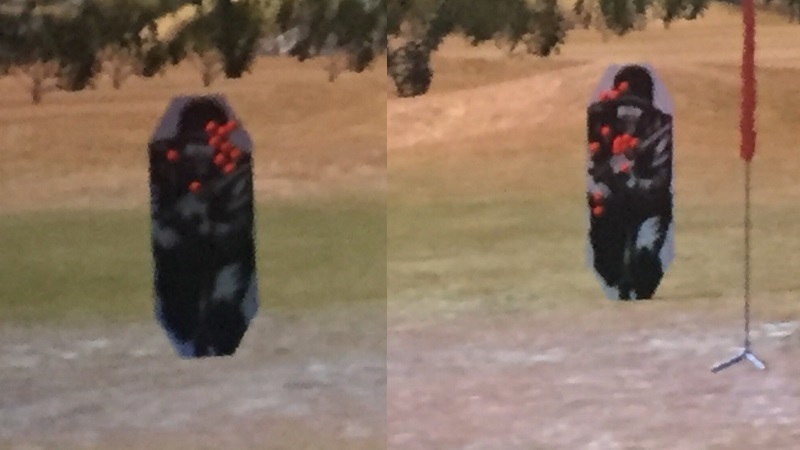
Aside from being non-lethal, the only difference between these weapons and the real thing is that the training weapons don’t make a loud bang when fired.
Airplanes
Saab is probably best known as the makers of the hugely-popular JAS 39 Gripen, but it also manufactures a number of other planes, each with a different purpose. The latest of which is the Saab 340 MSA, or Maritime Security Aircraft.
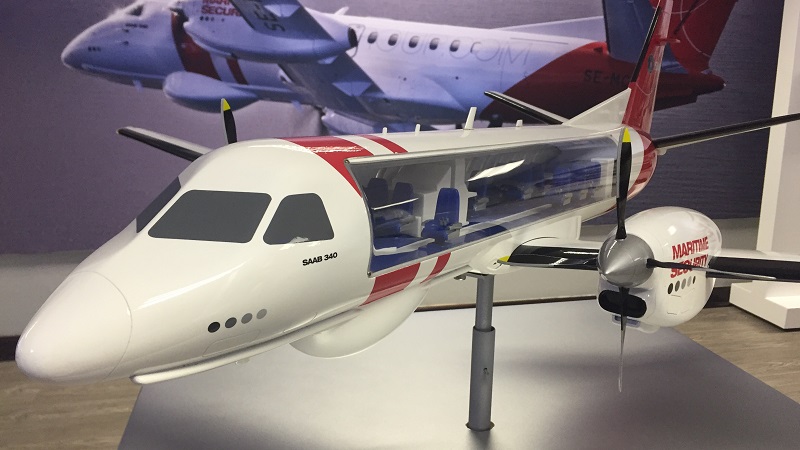
The idea behind the plane is the fill the gap between the Dakota aircraft and the next plane the company is working on now.
The 340 MSA naturally has better capabilities than the Dakota, and its main purpose is for the detection, classification and identification of maritime contacts – boats, ships and the likes.
It might not seem like it, but the plane has a rather impressive endurance record, as it can remain airborne for as long as nine hours (with an auxiliary fuel tank), with a range of almost 2 000 nautical miles (3 700km).
With its long flying time, it is also perfectly suited towards being a Search-And-Rescue aircraft.
Avionics systems and sensors
But every aircraft that takes to the skies will need the latest in avionic technology – and this is where Saab Grintek specifically steps in.
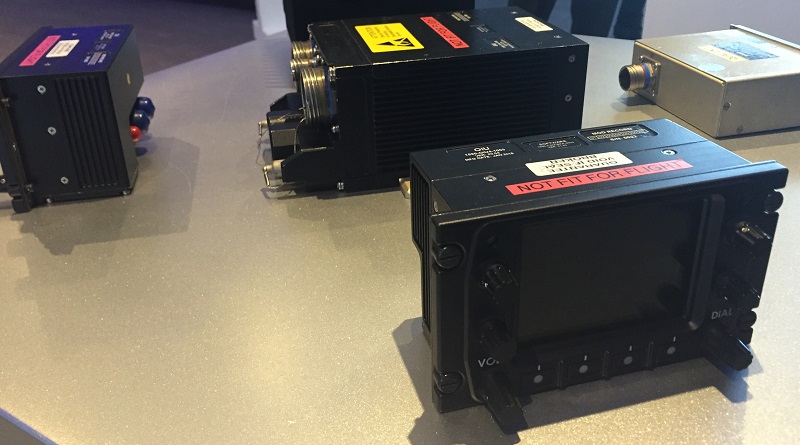
Manufactured in South Africa, the company is responsible for making some of the most widely-used avionics systems, for both military use and civilian aircraft.
The company makes sensors and avionic systems for almost every airplane type on the planet, which also includes advanced communication systems, that handle all communications in a craft.
In terms of sensor, the latest technology goes into make sensors that are so sensitive that it can detect metal fatigue or when parts need to be replaced. Having sensors monitor an aircraft’s “vital” hugely cut down on maintenance costs, and also speeds up repairs when it needs to be done.
Saab’s Carl-Gustaf
One of the most impressive looking systems, the Carl-Gustaf is a multi-role, portable shoulder-fired weapon.
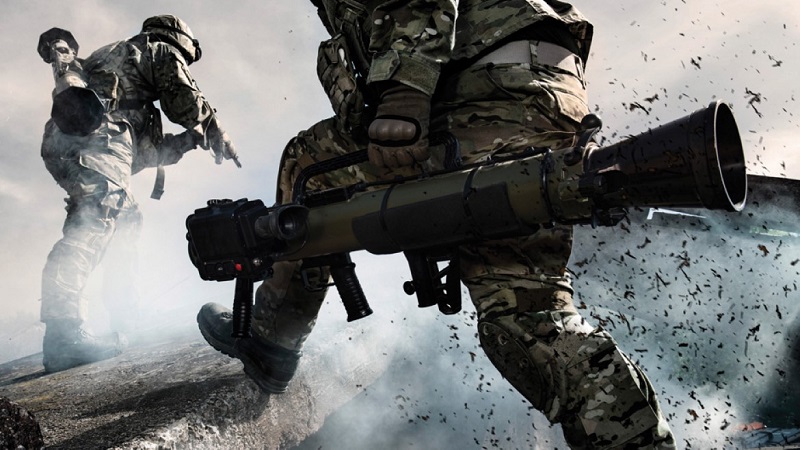
Currently there are two models (the M3 and the M4), and in short it is a shoulder weapon that can take different kinds on ammunition – ranging from armour penetration and anti-personnel, to ammunition for built-up areas as well as special features like smoke and illumination.
The latest model, the M4, weighs less than 7kg.
Electronic self protection systems
Saab develops an incredible range of protection systems for naval, air and army personnel, but Saab’s IDAS (Integrated Defence Aids Suite) is one of the more popular – and used by the South Africa Airforce.
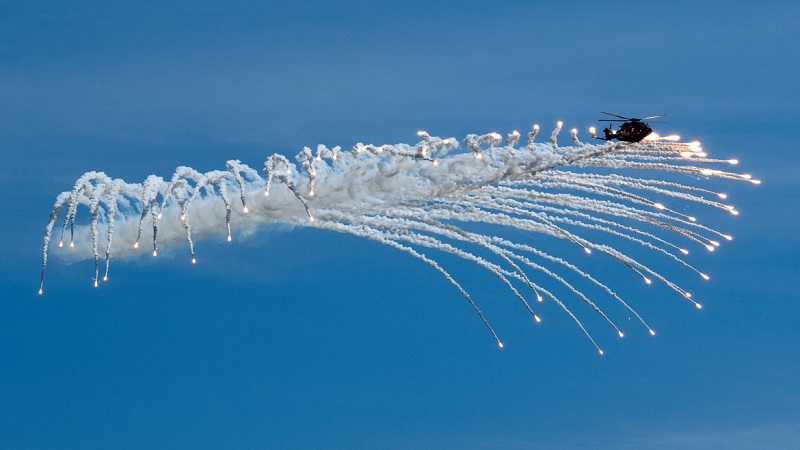
Essentially it is a missile warning system for any plane that has it fitted, so that it knows if it is being watched or being made a target.
“IDAS can be configured to become the high-end system with laser-warning, missile-approach-warning, as well as full multi-spectral detection capability for radar,” Saab explains.
The system has been used on South Africa’s Oryx, Puma, Cougar/Super Puma and Rooivalk, to name but a few.
Land Electronic Defence System
Just aircraft need to protect themselves from missile strikes, so to do vehicles on the ground. The Land Electronic Defence System (LEDS) an integrated, modular, entry level active defence system consisting of a laser warning segment and control segment.

The system allows troops and operators to determine if the vehicle that they are in is being painted with a laser by the enemy for distance tracking or a laser-guided missile. Once the system picks up a laser threat, a number of countermeasures can be deployed.
Some countermeasures can be set to automatically deploy, while others need to be triggered manually. These include moving into obscured cover, deploying a smoke screen, or more serious, launching advanced soft kills.
* Just a side note: the main image is the JAS 39 Gripen, but the fighter is not manufactured in South Africa.

